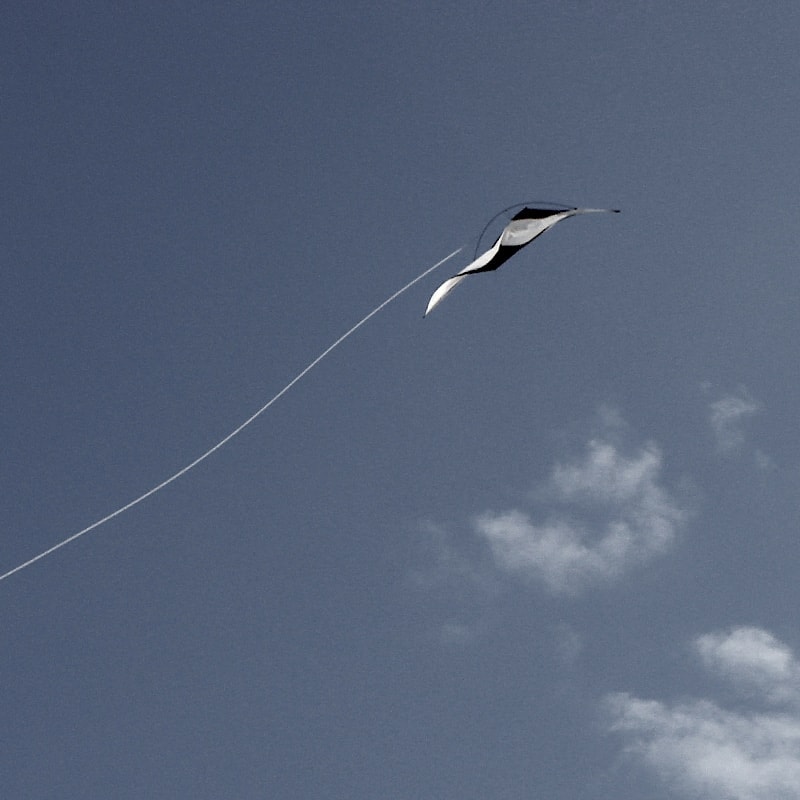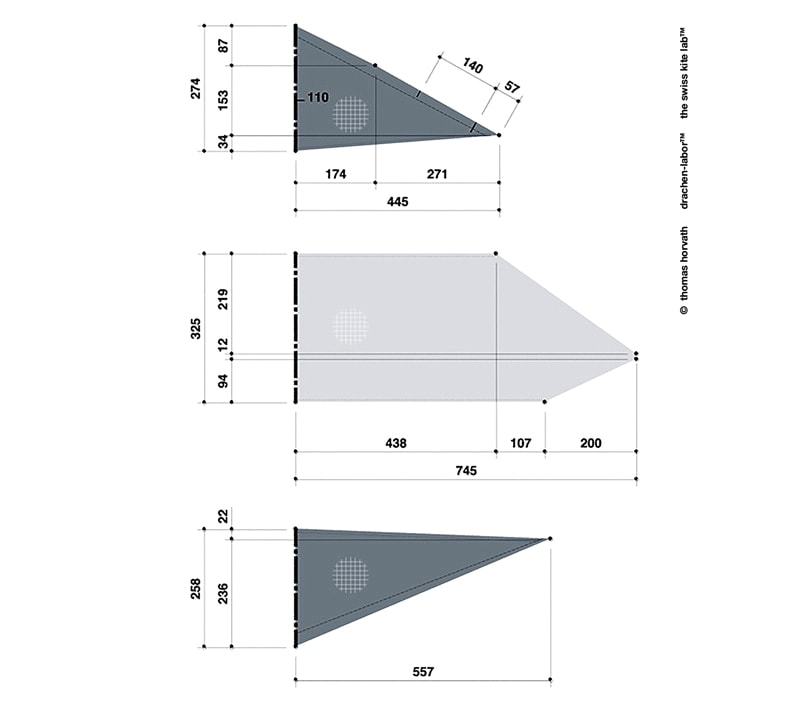The smooth, the bad, the ugly
The smoother variants of the original urban ninja kite. And as a bonus here's the fat tough one: urban ninja the bad: The one and only single line kite in the world performing loops. A kite-building-plan licensed under Creative Commons.

The smooth ones
Modified leading edges
Very close to the kite shown in the plan: There, the leading edges are Avia.125 3.1 mm carbon tubes, they weigh 7.5 g/m. Using our 3.0 mm carbon tubes at 5.4 g/m of the same length in the leading edges, the urban ninja will fly a bit smoother.
A light frame
For an even calmer behavior you can use the ul 3.0 mm carbon tubes for the whole frame, including spine and spreader. The kite will become slower and very precise, but with a slightly reduced wind range in strong wind. It will be simply blown away in a flat-spin, for instance. We have the special ul 3.0 mm 5.4 g carbon tubes in stock, most of the time.
Our factory made production-urban-ninja-ul's and the building set come in this configuration, it's the best.
Scale it up
A possible, scaled up variation of the kite is completely framed with Avia.125 tubes, which you can buy or order almost everywhere. But it's scaled up to 104%, thus, for example, the spine is 1.04 m long. The behavior in flight is similar to our production kite.
This version will be a bit more complicated for do-it-yourself kite builders: You have to look for the tubes in 2 m length and the white center panel is wider than the 1.40 m Icarex roll is. So, it will have to be laid out and cut lengthwise, consuming 1.50 m of the fabric. Details such as the nose, the wingtips etc. are not scaled, while the lines are.
The bad
Single line looping
Various prototype-stages of this kite flew extended public testings on kite festivals and meetings. What's possible under most diverse wind conditions, and what makes sense?
This kite flies in any wind, from zero to strong, with decreasing nonchalance. It's the only single line light-wind kite performing loops.
The building specs
Framing avia.125, 3.1 mm carbon tubes, 7.5 g/m:
Leading edges: 566 mm, stoppers at 138 mm from top
Spreader: 840 mm
Spine: solid 4 mm fiberglass rod: start with 860 mm, then shorten it step by step. Depending on the nose detail and the overlap of the panels x 2.
Lines, same as on the original urban ninja:
X-Line: 820 mm
Y-Line: 720 mm, shorten after first assembly
Z-Line: 130 mm
Bridle: 600 mm to 640 mm, pigtail a couple of inches or leader line 700 mm
Icarex leading edges: 30 x 874 mm
Icarex trailing edges: 12 x 812 mm, which is a bit stronger than on the original urban ninja.
The building procedure for making this kite is the same as for the original urban ninja. All details are also the same, except the nose, which is a Dacron piece of 35 x 70 mm on the bad, instead of 25 x 50 mm on the original ninja kite.
The dashed lines at the upper leading edge and above the trailing edge show optional reinforcements of adhesive icarex. They make the kite more sturdy when flying through radical moves but add quite some grams.
Tension the Y-Line until you like the radius of the loops and enjoy your radical flight.
All dimensions are mm, millimeters:

The plan for this kite is strictly for non-commercial use only:
creative commons attribution-noncommercial-no-derivative-works license.
Urban ninja the bad lifts off blatantly and flies the loops in Potsdam near Berlin. We manufacture this kite for friends and good customers, there's no building kit. This is a fascinating kite.
The Stabilizer™ for the production model of the bad is 800 mm long, color code dark gray, the Tube™ 860 mm and thus MiniPac compatible.
The ugly
There's no ugly variation, but heaps of copies and imitations, that's ugly.
The urban ninja kite complements a synergetic glider kite like the lwh perfectly. Play around by day with your ninjas in a little wind. On a calm evening take your well-adjusted "long way home" for high soaring.